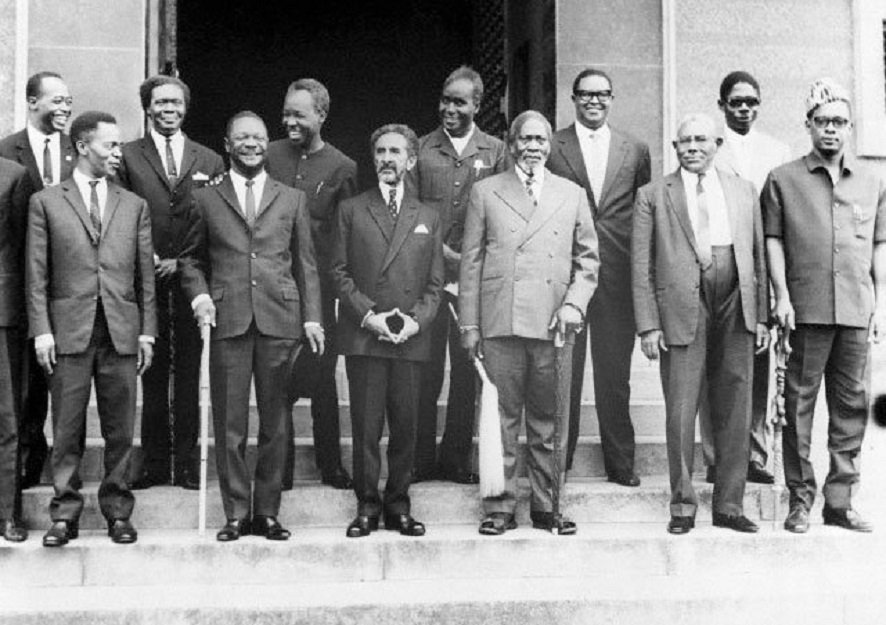The Conquering Lion of the Tribe of Judah, His Imperial Majesty Haile Selassie I, King of Kings of Ethiopia, Elect of God was the last emperor of the Solomonic Dynasty that ruled Ethiopia until September 12, 1974, when he was deposed at the age of 82.

The reign of one of the most popular leaders of the 19th century was cut short by the Soviet-backed Derg military regime, formally known as the Provisional Military Government of Socialist Ethiopia, which ruled till 1991.
Haile Selassie, who was accustomed to Rolls-Royces, was hustled from his spacious palace to an army officer’s bungalow in the backseat of a blue Volkswagen. The final confrontation between the aged and frail Emperor and the young and robust army men was like a scene from a Verdi opera. Haile Selassie scolded and insulted the officers as insolent, and they, with mounting ire, decided on the spot to take him to a military camp rather than to another palace. And on the way, he was jeered by crowds yelling: “Thief! Thief!
– The New York Times reported at the time.

Haile Selassie, born Ras Tafari Makonnen, was everything from monarch to the returned messiah as believed by the Rastafari movement which reveres him as God incarnate. He was also the Chairperson of the Organisation of African Unity (OAU) from 1963 to 1964 and 1966 to 1967.

His death in 1975 was shrouded in mystery. After his overthrow by the military following public discontent over economic inflation and low salaries, the emperor was placed under house arrest at the 4th Army Division in Addis Ababa and later imprisoned in a small apartment in his former palace, the Grand Palace.
His imprisonment fatally ended after 11 months on August 28, 1975, when the state media reported that Haile Selassie had died the previous day after suffering from “respiratory failure following complications from a prostate operation”. They said that he had been found dead in his bed by a servant.
This was denied outright by his doctor, Asrat Woldeyes, who rejected the government’s story of the 83-year-old’s death. It was widely believed that he was assassinated.
His successor, the Crown Prince Afsa Wossen Haile Selassie, who had been living in London since the overthrow, said his father had been in “excellent health” and demanded that independent doctors and the International Red Cross be allowed to carry out an autopsy to ascertain the cause of Haile Selassie’s death.
This wasn’t done and official sources said he was buried “in the strictest privacy according to Ethiopian custom” which demands that a monarch is buried within 24 hours after death.
The assassination rumours were rife until in 1992 when a coalition of rebel forces, the Ethiopian People’s Revolutionary Democratic Front (EPRDF), overthrew the Derg. After 17 years since his death, Haile Selassie’s remains were found under a concrete slab on the palace grounds. Some reports say his bones were found beneath a latrine.
The remains of the emperor were buried in Bhata Church near the tomb of his great-uncle Menelik II after a befitting imperial funeral by the Ethiopian Orthodox church on November 5, 2000.

The burial of haile selassie, 25 years after his death. baata lemariam church, where his mortal remains has been kept. addis abeba, ethiopia
Circumstances surrounding his death has been unknown after many court inquiries until recently when an unverified letter was made public by a Derg sergeant, Tadesse Tele Salvano, in his latest book.
The letter alleged that Haile Selassie was murdered by Lieutenant Colonel Daniel Asfaw, a key figure of the military regime, upon the direct command of the 17-member executive committee of the Derg which includes its chairman Mengistu Hailemariam, Teferi Banti, and 15 others.

This was explained by young Ethiopian law professor, Zelalem Kibret, who posted the letter on Twitter.
WoW! Although the matter was a public knowledge, 42 years after Haile Selassie’s murder, finally, a conclusive evidence that proved the murder got unearthed by one of Derg’s sergeants, Tadesse Tele Salvano, in his latest book. pic.twitter.com/MJ0KUetymD
— Zelalem Kibret (@zelalemkibret) July 17, 2018
“Finally, once again, it’s that same Daniel Asfaw, Derg’s first security chief, who killed Haile Selassie. Daniel was the one who also leads the Aman Andom sage and later personally killed Teferi Banti. He himself was murdered on Jan 1977, few minutes after he killed Teferi Banti,” Kibret added.
Per the letter, Haile Selassie was murdered by Lieutenant Colonel Daniel Asfaw, upon the direct command of the executive committee of the Derg, which constitutes 17 people, including Mengistu Hailemariam, Teferi Banti, and 15 others.
↓ “Egnana Abiyotu”, PP: 310, 211 pic.twitter.com/1dkL2wCQ4I
— Zelalem Kibret (@zelalemkibret) July 17, 2018
Another revealing evidence was court testimonies that corroborate the fact that Haile Selassie was murdered despite denial by the former Derg officials. These pieces of evidence ascertain the rumours and justify the belief that Haile Selassie, the last emperor of the 3,000 years old Ethiopian monarchy who ruled for half a century, was indeed murdered on August 27, 1975.
Finally, once again, it’s that same Daniel Asfaw, Derg’s first security chief, who killed Haile Selassie. Daniel was the one who also leads the Aman Andom sage and later personally killed Teferi Banti. He himself was murdered on Jan 1977, few minutes after he killed Teferi Banti. pic.twitter.com/FjHxCW0UgA
— Zelalem Kibret (@zelalemkibret) July 17, 2018










